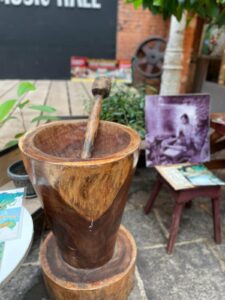
Chocolate and Costa Rica, a beautiful love story that we also make you discover at La Casa del Cacao
Ah, famous Costa Rican cocoa! Hard not to love him, unthinkable to hate him. But did you know that in some cultures, it is much more than just a seed used to make good chocolate?
Indeed, cocoa is an important resource in the history of Costa Rica. Derived from the term “cacahuatl” in the language of the indigenous peoples of Latin America, this cocoa has been harvested for centuries in the region. Costa Rica’s climate and land favor the planting and harvesting of excellent quality cocoa. More than a foodstuff, the cocoa was also a cultural, religious symbol and even a currency used by the indigenous tribes!
At the end of the 1970s, it was a tragedy for cocoa producers: a new fungus, monilia, wiped out more than 75% of crops in the different regions of Costa Rica. Now, the latter are introducing different methods to deal with this fungus. Many associations have come to the aid of farmers in order to cope with this phenomenon. Costa Rica just couldn’t give up chocolate that easily.
What about nowadays ?

Today, old practices remain, and new ones appear
Today and for decades, agricultural activity related to cocoa has been declining. This stems from farmers’ interest in other simpler, cheaper and more profitable products such as bananas or coffee.
Despite this, cocoa remains a sought-after commodity, a source of improvement in the living conditions of farmers. It is also thanks to this cocoa that associations such as ACOMUITA or APPTA were born and have made it possible to help many indigenous populations. In addition, cocoa has made it possible to promote organic farming: in fact, 40% of cocoa plantations in Costa Rica respect its principles. At La Casa del Cacao, we use products from organic farming too!
Even today, cocoa is grown a lot as the ancestors did before the arrival of the Spaniards. There are many organic and environmentally friendly plantations in many native reserves of the country. Although this activity was not as developed as one would like to believe (there was a significant increase in the agricultural activity of chocolate with the arrival of the United Fruit Company at the end of the 19th century and the creation of cocoa monocultures), the cultivation of cocoa remains an ancestral activity. Many tribes still carry on this tradition today.

The cocoa bean, a sought-after commodity also for tourism!
Cocoa routes in Costa Rica
If you are interested in this history of chocolate in Costa Rica, you will necessarily have to travel to the southern Caribbean coast. There is a huge part of the country’s cocoa plantations.
It is important to distinguish between two kinds of plantations: monoculture type plantations and traditional methods that still live through the descendants of the indigenous ethnic groups of Costa Rica, such as the Bribri. Monoculture appeared with the United Fruit Company in the 20th century
As for the second type, you can discover how cocoa is made and visit plantations by going to the Talamanca reserve, an extremely important region when it comes to cocoa. It is in particular in this place that the APPTA (Asociación de Pequeños Productores de Talamanca) and ACOMUITA (the Bribri women’s association of Talamanca) were born, two associations whose desire is to help small cocoa producers, respectful ancestral methods. It was in Talamanca that the first peoples cultivated cocoa, long before the arrival of the Spaniards.
If you want more precise finca (cocoa plantation) addresses, you will find some by also going to the Upala region: named La Amistad, a 50-hectare finca awaits you. She takes care of the whole process from A to Z, until it is sent to Europe. This is a great discovery for all chocolate lovers.
You will also be able to see finca in many places in Costa Rica: La Fortuna, Manuel Antonio, the province of Puntarenas, Puerto Viejo… As much to tell you that you have plenty to do in Costa Rica!
